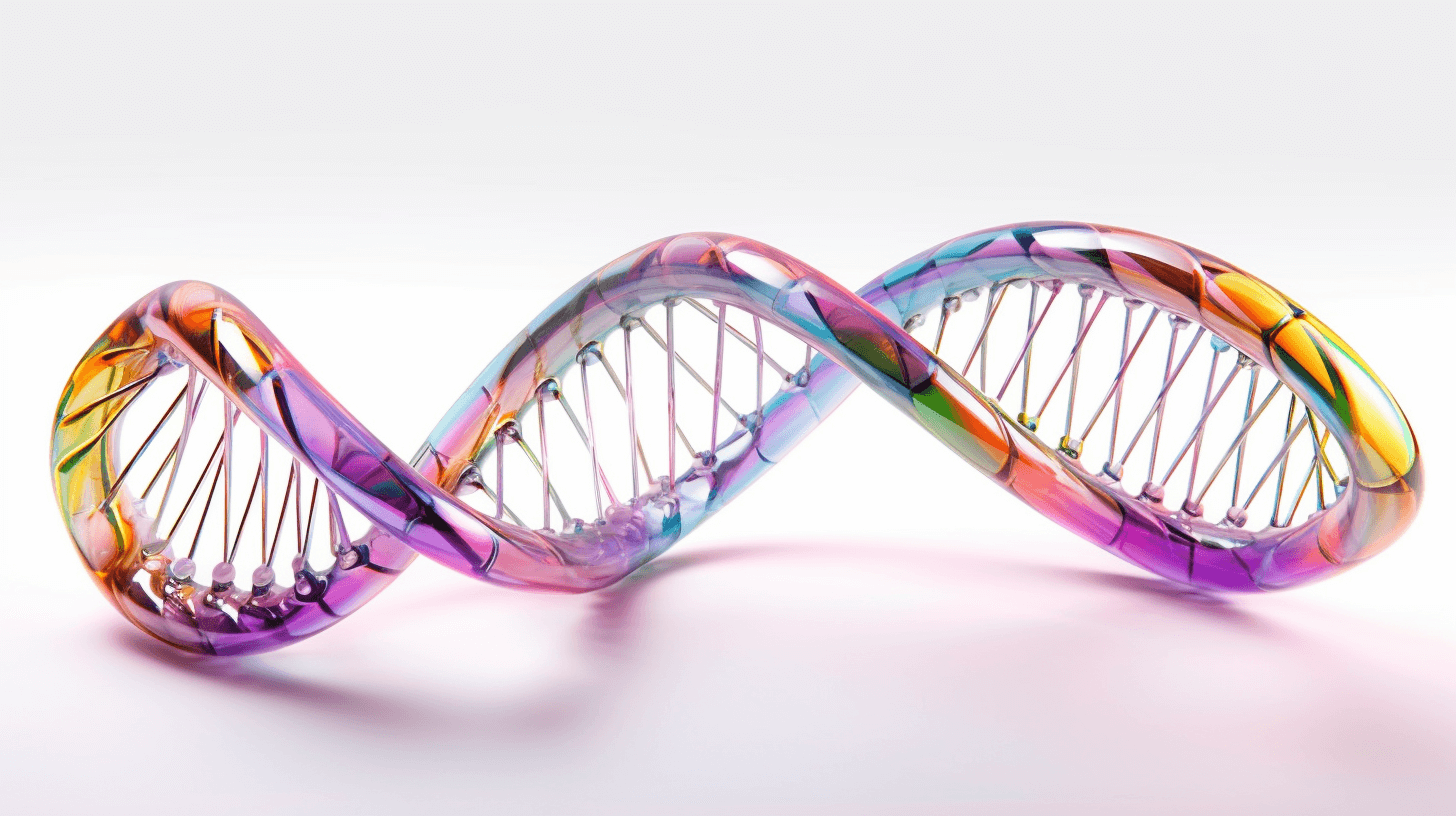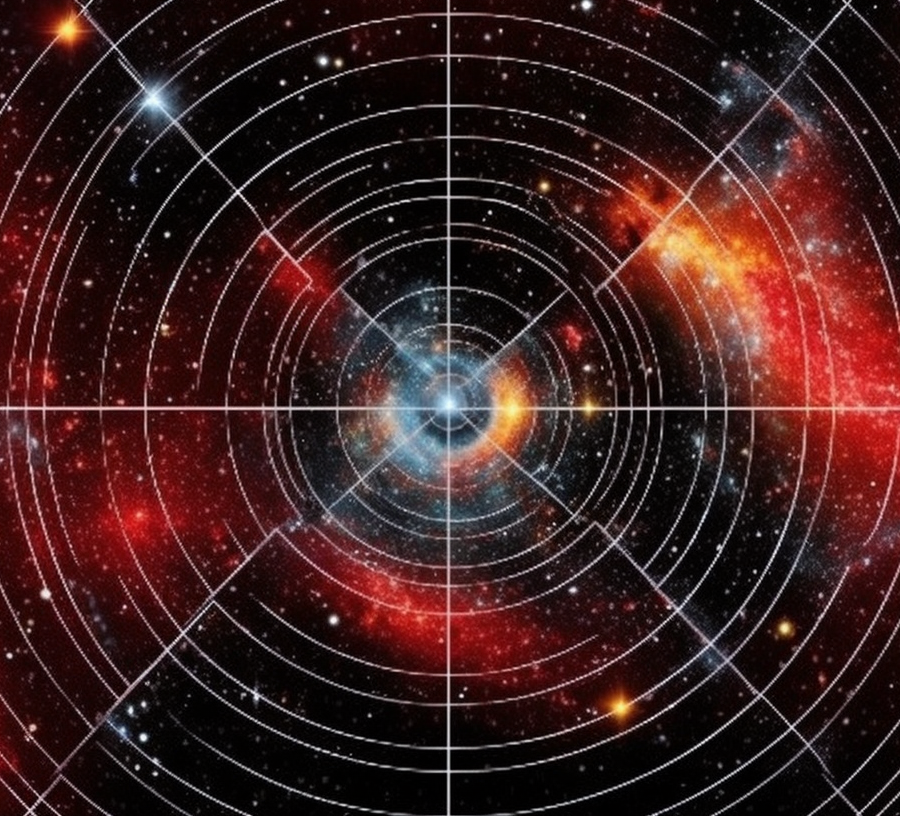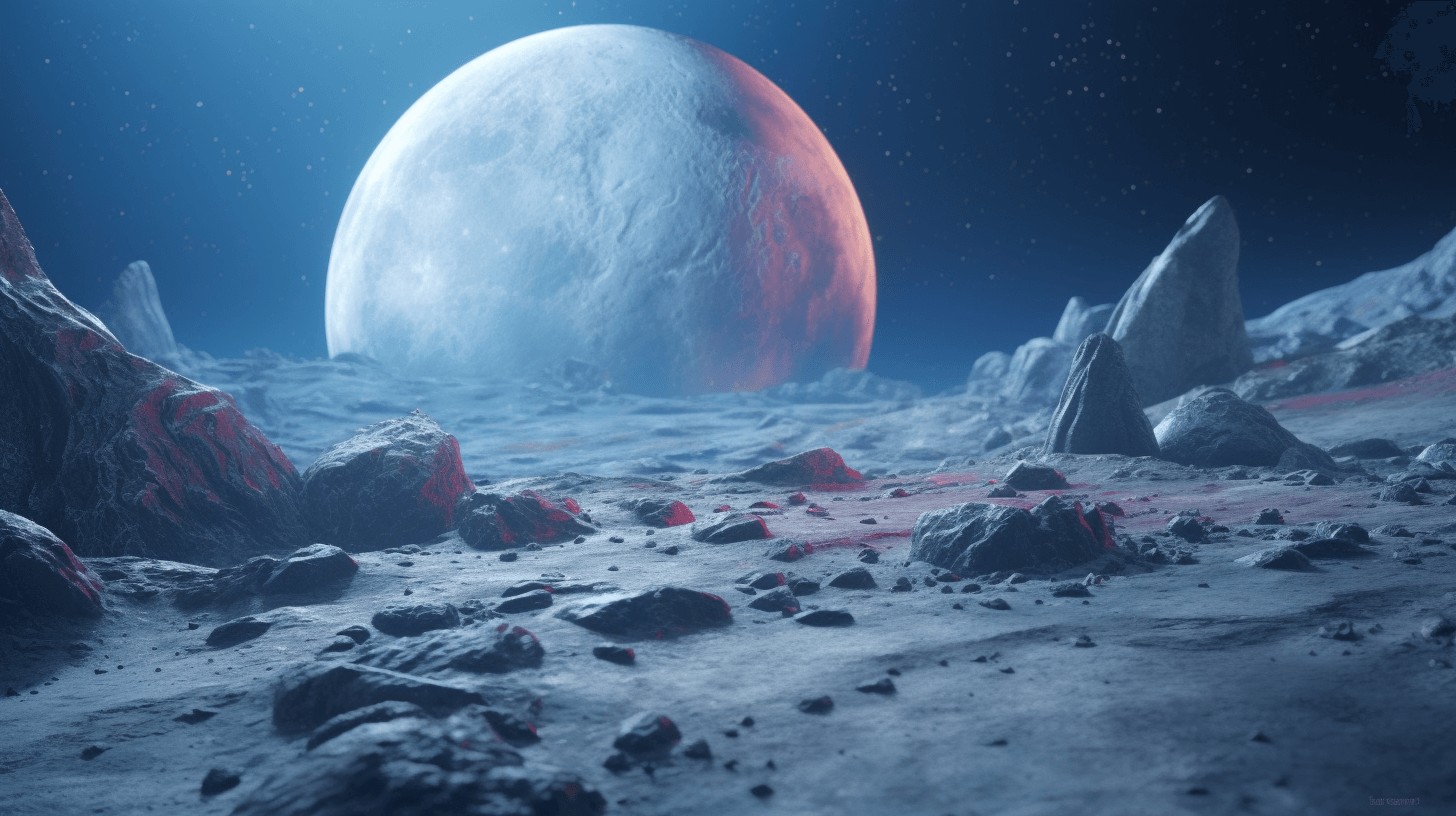😲🧬🕵️♂️ Ho, Bruddah! Yoa DNA Stay All Ova, Now Can Kaukau From Da Air. Da Kine Privacy Kumu Worried
Ho, check dis out cuz. We talking ’bout da environmental DNA, or da “eDNA” – da kine small kine genetic stuffs dat all living creatures leave behind, yeah? 🍃🐾💦 Researchers been using um fo’ track da kine invasive species, monitor da rare or secretive animals, even find da ones we thought was kaput. Plus, dey been using um in da wastewater systems fo’ check Covid an’ odda buggahs too, yeah? 🦠🚽🔬
But, da kine scientists using eDNA been finding choke human DNA too, brah. To dem, it’s like rubbish messing up their data. But, what if somebody went start collecting human eDNA on purpose, yeah? 😮💡
Dis new kine DNA collecting stuff, it’s like catnip for da police, says Erin Murphy, one law professor. She worries dat could cause plenny pilikia for our privacy and civil rights, especially as we get more high-tech and can get more info from even smaller eDNA samples. 🚔💻🔎
Da results of dis kine research, just came out in da “Nature Ecology & Evolution” journal. Dey show dat scientists can find out medical and ancestry info from da small kine pieces of human DNA dat stay in da environment. 😷👨👩👧👦🌍
Da kine experts say dis finding make um even more important fo’ get good rules ’bout genetic privacy. But right now, in da U.S., da rules mo’ easy fo’ da police to use new tech than fo’ da researchers to get approval fo’ do studies to make sure da thing even work, yeah? 📜⚖️🤷♂️
Da thing is, we been knowing fo’ long time dat our DNA is all ova da place like opala. But, we neva think um matter cuz we think da DNA in da environment too small and too broke up fo’ be useful. But now, da scientists realizing dat even da small pieces can tell plenty about da people in one area. 🌍🧬🔍
One time, da researchers took one small sample of water from one creek in St. Augustine, Florida. They found way more readable human DNA than they thought they would. And as we learn more about human genetics, even da small samples can give us plenny info. 🌊🔬🧪
Dealing with this kind kine DNA, it can be like one double-edged sword, yeah? On one side, we can use it fo’ help da public health guys figure out if one community get one disease. But on da other side, it can also be used fo’ find and hassle certain kine people. 🌡️💉👮♂️
Ho, so how we going know if dis eDNA stuff going be one big pilikia? Well, dat going depend on how easy it is fo’ identify one person from their DNA. And right now, in some situations, we can already do dat. 🤔🔬🕵️♂️
But, da kine techniques dat Dr. Duffy and his team used fo’ find DNA in public places not going work with da methods da police in No Ka Kapu: Da Findings Boost Da Need For Genetic Privacy Rules, Big Kine Dey wen found out dat da DNA we leave all ova da place, li’dat in da water or da air, could tell plenny bout us, even our medical kine stuffs. Da scientists, dey call dis kine stuff “environmental DNA” or “eDNA” for short. Dey been using dis kine stuff for track da animals, and even find out if get sick kine virus in da wastewater systems. 🐢💦🔬
But da scientists, dey also been finding choke human DNA. To dem, dis one kine pollution, messing up their data. But wat if someone wen try collect da human eDNA on purpose? 😲🤔💻
Da new kine ways for collect DNA, da law enforcement guys, dey going nuts for um. Dey even using da DNA for make sketches of da suspect. But dis kine stuff, could be one big problem for our privacy and civil rights, especially as da technology get more advanced. 🚔🕵️♂️🔍
Dr. Duffy and his scientist guys, dey wen use one easy kine and cheap technology for see how much kine stuff dey could find out from da human DNA dey wen collect from da environment. Dey wen find out dat dey could find out medical and ancestry information from da small kine pieces of human DNA dat stay floating around. 👨🔬💉🌎
Da guys who study da ethics and da laws, dey say dat da findings make um even more important for have rules for genetic privacy. Da researchers, dey also wen say dat da rules for dis kine stuff, dey no good. Right now, is more easy for da law enforcement guys for use one new kine technology, even if dey no sure if um work, than for da scientists for get approval for do da studies for make sure da technology work. 📚⚖️🚨
Da pieces of our DNA, dey stay all ova da place, li’dat rubbish. But before, da scientists, dey thought dat dis DNA, was too small and no good for be useful. But now, dey finding out dat can learn plenny from dis kine DNA. 🧬🗑️🔎
Da guys who study da animals, dey like da environmental DNA, cuz dey only need small kine pieces for find out wat kine animals stay in da sample. But afta dey wen find out get choke human eDNA, Dr. Duffy and his scientist guys, dey wen try find out more bout da human DNA in da environment, and wat kine stuff dey could learn bout da people from dis kine DNA. 🐾🍃🏞️
In one of their experiments, dey wen take one small kine sample of water from one creek. Den dey wen put da DNA from da sample in one kine machine, called one nanopore sequencer, dat can read da long kine stretches of DNA. Da machine, cost about $1000, and is small kine, can plug um into one laptop. 💻💦👩🔬
From da samples, dey wen find out more clear kine human DNA than dey been thinking dey going find. And da more we learn bout human genetics, da more kine stuff we can find out, even from small kine samples. Dey wen find enough mitochondrial DNA, da kine DNA dat go from da madda, for find out da ancestry of da person. And from da small kine pieces of nuclear DNA, dey wen find out dat dey can even tell if da person get one kine genetic disease. 🧪👵🌳
Dis kine studies, show dat da human eDNA, get choke potential for do good kine stuff, li’dat track da spread of one virus or check out da health of one community. But also, get choke potential for do bad kine stuff, li’dat invasion of privacy. 😷🌐🔐
Da technology for collect and read da eDNA, going only get more better, and more cheap. So da guys who make da laws, dey need for come up with new kine rules, for make sure dat we can use dis kine technology for do good kine stuff, but also protect da privacy and da rights of da people. 📜⚖️💻
In da end, da researchers, dey say dat we all need for be more aware of da DNA we leaving all ova da place. And we all need for be part of da conversation bout how we going use dis kine technology, and wat kine rules we going make for protect our privacy. So no matter wea you stay, you gotta know dat your DNA, is one part of you dat you no can hide. 🗣️👥🔏
Duffy and his hui, dey hope dis kine research going make more people talk story bout dis kine issues. Dey say dat we all kuleana for make sure dat da technology no going hurt us, but going help us. So let’s all make sure dat we get da right kine rules for protect our genetic privacy. 🙌🌺🌈
NOW IN ENGLISH
😲🧬🕵️♂️ Wow, your DNA is Everywhere, Even in the Air! Privacy Experts Express Concern
Take note of this – we’re talking about environmental DNA, or “eDNA”. These are tiny genetic fragments that all living organisms leave behind. 🍃🐾💦 Researchers have been using it to track invasive species, monitor elusive or endangered animals, and even rediscover species believed to be extinct. Moreover, they’ve been employing it in wastewater systems to monitor Covid and other pathogens. 🦠🚽🔬
However, scientists examining eDNA have discovered a significant amount of human DNA. To them, it’s like trash contaminating their data. But what if someone started collecting human eDNA deliberately? 😮💡
This new kind of DNA collection is highly attractive to law enforcement, says Erin Murphy, a law professor. She is concerned that it could create substantial issues for our privacy and civil rights, especially as technology improves and allows us to obtain more information from even smaller eDNA samples. 🚔💻🔎
The findings of this research have just been published in the “Nature Ecology & Evolution” journal. They demonstrate that scientists can deduce medical and ancestral information from tiny pieces of human DNA found in the environment. 😷👨👩👧👦🌍
Experts assert that these discoveries make it even more essential to establish robust regulations concerning genetic privacy. However, in the U.S., the rules currently favor law enforcement’s use of new technologies over researchers obtaining approval to verify the efficacy of such technologies. 📜⚖️🤷♂️
We’ve known for a long time that our DNA is scattered everywhere like trash. We previously thought it was insignificant because the environmental DNA fragments were too small and fragmented to be useful. But now, scientists are realizing that even these tiny pieces can reveal a lot about the people in a particular area. 🌍🧬🔍
In one study, researchers took a small water sample from a creek in St. Augustine, Florida. They found a far greater amount of readable human DNA than they expected. As we continue to learn more about human genetics, even these small samples can provide us with extensive information. 🌊🔬🧪
This kind of DNA analysis can be a double-edged sword. On one hand, it can help public health officials determine if a community is affected by a particular disease. On the other hand, it can also be used to identify and potentially harass certain individuals. 🌡️💉👮♂️
So, how can we tell if this eDNA research will be problematic? Well, that will depend on how easily a person can be identified from their DNA. And currently, in some cases, we can already do that. 🤔🔬🕵️♂️
Dr. Duffy and his team have developed techniques for finding DNA in public places that do not align with the methods police currently use. The findings from their studies underscore the need for more robust genetic privacy rules. They discovered that the DNA we leave behind in the environment, such as in water or air, can tell a lot about us, including our medical conditions. The researchers call this “environmental DNA” or “eDNA”. 🐢💦🔬
But this revelation comes with potential downsides. The new ways of collecting DNA are exciting for law enforcement agencies who can even use the DNA to create sketches of suspects. However, this could pose significant problems for our privacy and civil rights, especially as technology continues to advance. 🚔🕵️♂️🔍
Dr. Duffy and his team used straightforward and affordable technology to analyze the amount and type of information they could glean from environmental human DNA. They found that they could extract medical and ancestral information from tiny fragments of human DNA found in the environment. 👨🔬💉🌎
Experts in law and ethics argue that these findings underscore the importance of establishing rules for genetic privacy. They also note that the current regulations are insufficient. At present, it’s easier for law enforcement to adopt new technology, even if its effectiveness is unproven, than for scientists to gain approval for studies to test the technology’s viability. 📚⚖️🚨
Our DNA is scattered everywhere, like garbage. Until recently, scientists believed that this DNA was too fragmented and minuscule to be of any use. However, they are now discovering that these tiny DNA fragments can provide a wealth of information. 🧬🗑️🔎
Biologists appreciate environmental DNA because even small fragments can provide information about the organisms present in a sample. After discovering a significant amount of human eDNA, Dr. Duffy and his team sought to learn more about the human DNA in the environment and what it could reveal about people. 🐾🍃🏞️
In one of their experiments, they took a small water sample from a creek and then put the DNA from the sample through a machine called a nanopore sequencer, which can read long stretches of DNA. This machine, which costs about $1000 and is portable, can be plugged into a laptop. 💻💦👩🔬
From the samples, they found more clear human DNA than they anticipated. As our understanding of human genetics expands, we can extract more information, even from tiny samples. They found enough mitochondrial DNA (which is inherited from the mother) to determine a person’s ancestry. From the tiny fragments of nuclear DNA, they were even able to discern if a person has a genetic disease. 🧪👵🌳
These studies show that human eDNA has significant potential for beneficial applications, such as tracking the spread of a virus or assessing the health of a community. However, it also has the potential for misuse, such as infringing on privacy. 😷🌐🔐
The technology to collect and read eDNA will only improve and become more affordable. Therefore, lawmakers need to develop new regulations to ensure that we can use this technology for beneficial purposes while also protecting people’s privacy and rights. 📜⚖️💻
In conclusion, the researchers advise that we all need to be more aware of the DNA we are leaving behind. We should all be part of the conversation about how we will use this technology and what regulations we will establish to protect our privacy. Remember, your DNA is a part of you that you cannot hide. 🗣️👥🔏
Duffy and his team hope that their research will encourage more people to discuss these issues. They believe that it is our responsibility to ensure that technology benefits us and does not harm us. Let’s all work to establish the right regulations to protect our genetic privacy. 🙌🌺🌈







